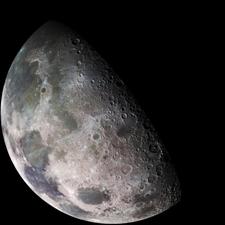 Chandrayaan-1 is the name of the first mission India has ever launched towards the moon, and it was launches succesfully in the morning of October 22, from inside their country. This started the journey which will also imply a major manoeuvre – the lunar orbit insertion – about 2 weeks from the launch date.
Chandrayaan-1 is the name of the first mission India has ever launched towards the moon, and it was launches succesfully in the morning of October 22, from inside their country. This started the journey which will also imply a major manoeuvre – the lunar orbit insertion – about 2 weeks from the launch date.
After it will orbit the moon, it will lower its altitude to 100 km which will be the lowest altitude. Then, the probe will eject from it and provide information about the lunar surface. The mission will continue from space, where it will also gather information using 11 scientific instruments.
Three of these instruments have been provided by european countries. The UK provided the Imaging X-Ray Spectrometer (C1XS) which was developed by the Rutherford Appleton Laboratory. Germany supplied the Smart Near-Infrared Spectrometer (SIR-2) which was developed at the the Max Planck Institute for Solar System Science. Sweden gave them the Sub-kiloelectronvolt Atom Reflecting Analyser (SARA), developed by the Swedish Institute of Space Physics.
This is not the first time Europe has collaborated with India.
“In an era of renewed interest for the Moon on a world-wide scale, the ESA-ISRO collaboration on Chandrayaan-1 is a new opportunity for Europe to expand its competence in lunar science while tightening the long-standing relationship with India – an ever stronger space power,” said Prof. David Southwood, ESA Director of Science and Robotic Exploration. “While the exploration of space calls for new challenges to be overcome, joining forces is becoming more and more a key to future successes.”
“We congratulate ISRO on the successful launch this morning and we are eagerly looking forward to science to begin,” Southwood concluded.


